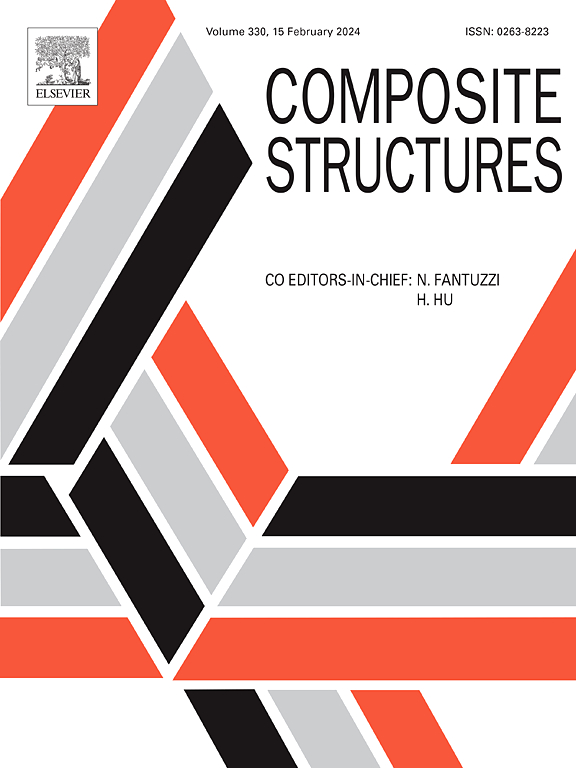边界条件对冲击GFRP薄壁沟道截面残余抗压强度的影响
IF 6.3
2区 材料科学
Q1 MATERIALS SCIENCE, COMPOSITES
引用次数: 0
摘要
冲击后压缩(CAI)是评价薄壁结构强度和稳定性的重要指标。本研究研究了复合材料沟道截面轮廓的冲击后压缩行为,以弥合标准粘结水平测试与更复杂的结构配置之间的差距,其中内部损伤与压缩载荷下的屈曲现象相互作用。采用准各向同性铺层的八层玻璃纤维增强聚合物(GFRP)制成的型材,在与腹板45°角处分别施加20 J和30 J的能量冲击,然后进行轴向压缩。建立了有限元模型,在一次模拟中同时模拟碰撞和压缩两个阶段。分析了节点位移、u型槽、v型槽和平板四种边界条件。并与实验结果进行了比较。研究发现,边界条件表征对CAI响应有显著影响。特别是,仅使用节点位移的简化bc无法捕获实验中观察到的接触相互作用。物理边界约束的精确建模被证明是复制撞击后行为的关键。这项工作表明,结构级保真度,特别是在边界条件处理中,对于复合结构中CAI性能的可靠预测至关重要。本文章由计算机程序翻译,如有差异,请以英文原文为准。
Influence of boundary conditions on the residual compressive strength of impacted thin-walled GFRP channel section profiles
Compression after impact (CAI) is a crucial assessment for the strength and stability of thin-walled structures. This study investigates the post-impact compressive behaviour of composite channel section profiles to bridge the gap between standard coupon-level testing and more complex structural configurations, where internal damage interacts with buckling phenomena under compressive loading. The profiles, made of eight-layer glass fibre reinforced polymer (GFRP) with a quasi-isotropic layup, were impacted at the corner (45° to the web) with energies of 20 J and 30 J, then subjected to axial compression. Finite element models were developed to simulate both the impact and compression stages in a single simulation. Four types of boundary conditions (BCs) were analysed: nodal displacement, U-shaped groove, V-shaped groove, and flat plate. The resulting force–shortening responses were compared with experimental results. The study found that boundary condition representation significantly influences the CAI response. In particular, simplified BCs using only nodal displacements failed to capture the contact interactions observed in experiments. Accurate modelling of the physical boundary constraints was shown to be critical for replicating the post-impact behaviour. This work demonstrates that structural-level fidelity, especially in boundary condition treatment, is essential for reliable prediction of CAI performance in composite structures.
求助全文
通过发布文献求助,成功后即可免费获取论文全文。
去求助
来源期刊

Composite Structures
工程技术-材料科学:复合
CiteScore
12.00
自引率
12.70%
发文量
1246
审稿时长
78 days
期刊介绍:
The past few decades have seen outstanding advances in the use of composite materials in structural applications. There can be little doubt that, within engineering circles, composites have revolutionised traditional design concepts and made possible an unparalleled range of new and exciting possibilities as viable materials for construction. Composite Structures, an International Journal, disseminates knowledge between users, manufacturers, designers and researchers involved in structures or structural components manufactured using composite materials.
The journal publishes papers which contribute to knowledge in the use of composite materials in engineering structures. Papers deal with design, research and development studies, experimental investigations, theoretical analysis and fabrication techniques relevant to the application of composites in load-bearing components for assemblies, ranging from individual components such as plates and shells to complete composite structures.
 求助内容:
求助内容: 应助结果提醒方式:
应助结果提醒方式:


